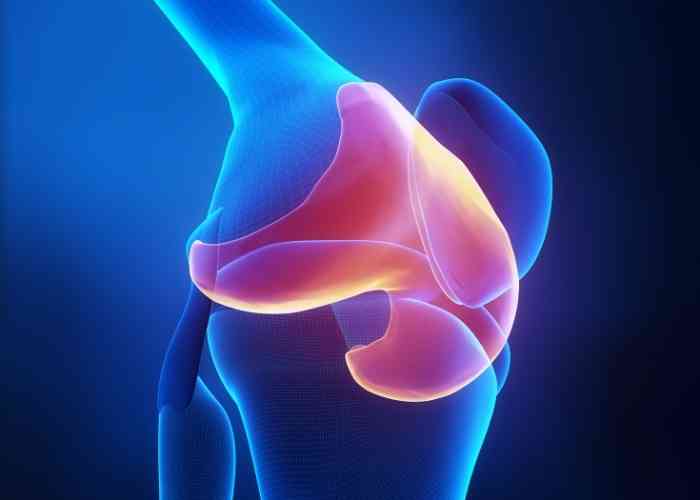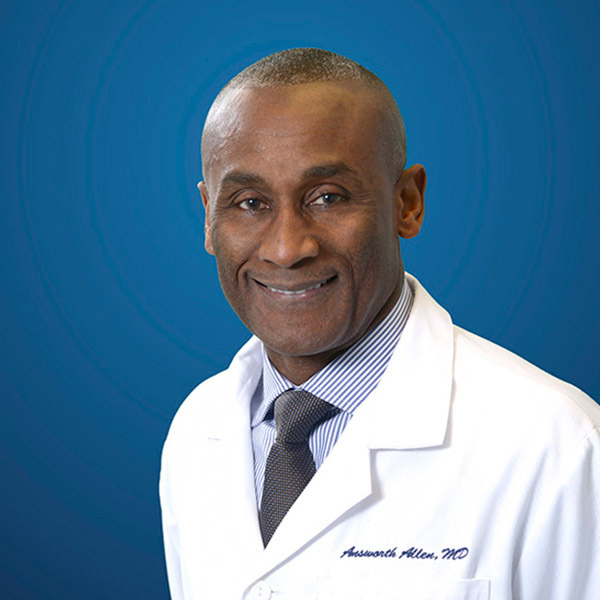What is an articular cartilage injury?
The lower end of the femur (thigh bone) and the upper end of the tibia (shin bone) come together to form the knee joint. The ends where these bones converge are blanketed in a shiny and smooth white tissue known as articular cartilage. This connective tissue aids in joint movement and protects the ends of the femur and tibia when gliding over one another. The articular cartilage can become damaged from normal “wear-and-tear” or injured in a traumatic event. Damage to the cartilage can result in osteoarthritis, a painful condition that occurs with bone-on-bone movement.

What is the treatment for an articular cartilage injury?
Conservative therapies, such as rest, ice, and non-steroidal anti-inflammatory medications, are sufficient treatments for small articular cartilage defects. However, in the event of significant articular cartilage damage, or unsuccessful conservative therapy, surgical intervention may be required to restore the articular cartilage. There are several surgical techniques that can be utilized to restore this cartilage. Patients who experienced a single cartilage defect or injury are more likely to benefit from surgical restoration than those with multiple cartilage lesions. Dr. Answorth A. Allen, orthopedic knee surgeon, treats patients in Manhattan, New York City, Westchester, Long Island and surrounding areas who have experienced an articular cartilage injury and are in need of articular cartilage restoration.
How is articular cartilage restoration performed?
There are multiple surgical procedures that Dr. Allen can employ for articular cartilage restoration. These restoration techniques are tailored to each patient’s specific injury or cartilage defect and should only be performed by an experienced orthopedic knee surgeon. Dr. Allen may employ one of the following restoration techniques:
- Chondroplasty: This procedure, also known as debridement, simply excises and removes the damaged cartilage to reduce the pain and inflammation associated with this condition. Patients with full-thickness cartilage defects are not candidates for this restoration technique.
- Microfracture: This technique utilizes a sharp surgical instrument to create openings within the bone and produces the natural healing response of a bone bleed. The cells from the blood supply permeate the damaged cartilage and harden into new cartilage. However, Dr. Allen will employ this restoration technique as a last resort because studies have shown that the cartilage generated from microfracture is not as proficient at bearing weight as the native cartilage.
- Autologous Chondrocyte Implantation (ACI): This method involves two stages. First, a biopsy of healthy cartilage from the knee is removed, and this tiny fragment of cartilage is grown in a lab. The new cartilage is then implanted into the knee during a second surgery.
- Osteochondral Allograft Transplantation Surgery (OATS): This procedure harvests a cartilage graft from a donor, either deceased or from a tissue bank, that is molded to the patient’s specific areas of damaged cartilage. This surgical graft provides a surface for new cartilage to grow and ultimately restore the damaged tissue.
What is the recovery period like after articular cartilage restoration?
The recovery period following articular cartilage restoration is determined by the specific surgical technique performed by Dr. Allen. Patients who underwent chondroplasty can expect a full recovery in approximately 6 weeks, while patients who underwent ACI or OATS can expect a full recovery in approximately 3-4 months. In general, patients in New York can typically expect the following:
- The knee may be immobilized immediately following surgery, and continue for 6-8 weeks, to protect the new cartilage during the healing process. Chondroplasty patients are encouraged to limit weight-bearing with crutches for up to a week after surgery.
- A continuous passive motion (CPM) machine is used for approximately 6 weeks after surgery.
- A combination of rest, ice, and non-steroidal anti-inflammatory medications is encouraged for pain management.
- A strict physical rehabilitation program will be tailored based on the articular cartilage restoration technique performed. The key to a successful recovery following articular cartilage restoration is adhering to and completing this physical therapy program.
Articular Cartilage Surgeon

Have you experienced a recent traumatic knee injury that resulted in pain during movement? If so, you may qualify for articular cartilage restoration surgery. Articular cartilage surrounds and cushions the knee joint during movement. Severe damage to this cartilage can be repaired with surgery. Complex knee surgeon Doctor Answorth Allen provides diagnosis and personalized treatment plans for patients in Manhattan, New York City, Westchester, Long Island and surrounding areas. Contact Dr. Allen’s team today!






